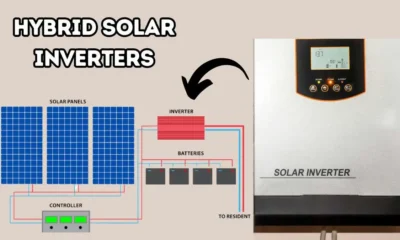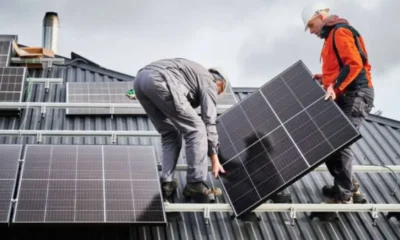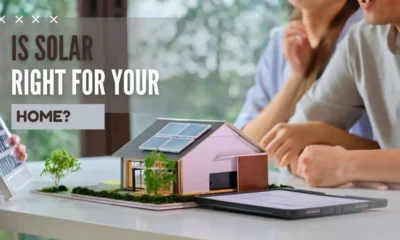HOME IMPROVEMENT
A Guide to Installing More Solar Panels for Energy Optimization
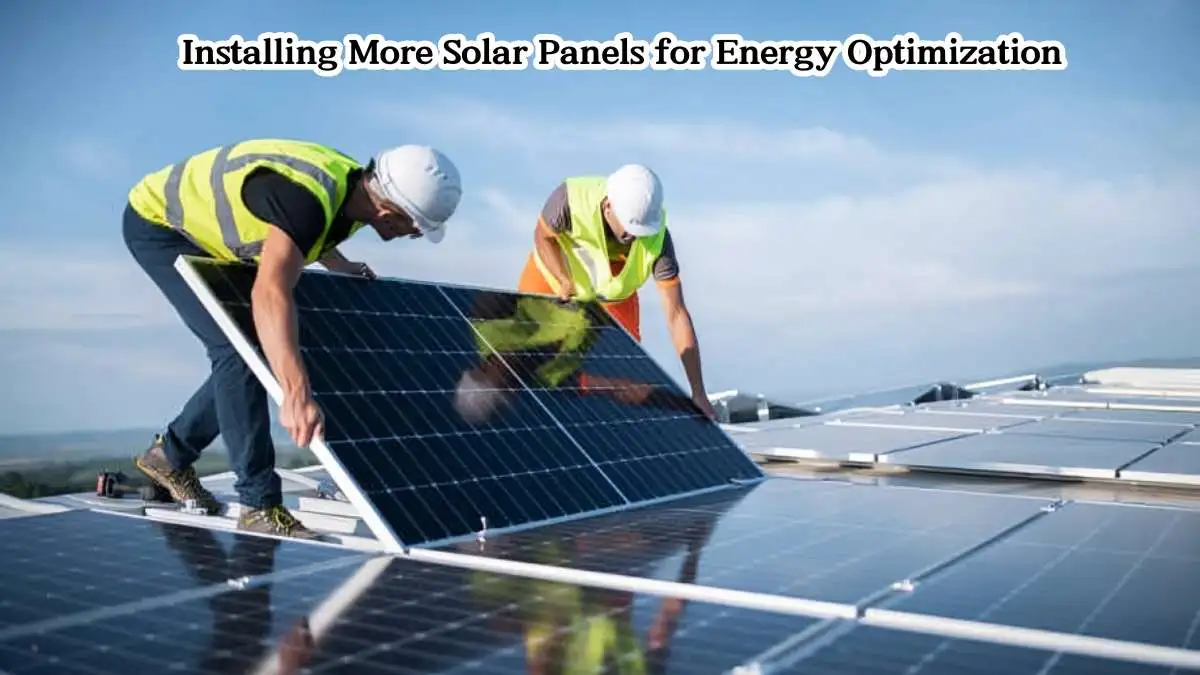
In today’s world, renewable energy is super important.
Solar power is a standout way to cut back on fossil fuels. Lots of homeowners and businesses have started with solar panels. But to really boost your energy efficiency, it’s often a good idea to expand your solar setup.
This guide will help you by adding more solar panels to amp up your energy optimization, cut your carbon footprint, and maybe even save on energy bills.
Table of Contents
Understanding Energy Optimization
Energy optimization is all about maximizing the efficiency and effectiveness of your energy use. In the context of solar energy, this means not only generating more power but also ensuring that the power you generate is used in the most efficient manner possible.
By installing additional solar panels, you can significantly increase the amount of renewable energy your home or business produces, thus enhancing your existing solar setup with more panels to meet your energy needs.
Assessing Your Current Solar System
Before you can begin installing additional solar panels, it is crucial to assess your current solar system. This involves understanding your current energy consumption, the capacity of your existing solar setup, and the potential for solar panel expansion.
Evaluating Your Energy Consumption
Start by evaluating your current energy consumption. Look at your electricity bills over the past year to determine your average monthly usage. This will give you a clear idea of how much additional energy you need to generate to achieve energy optimization.
Analyzing Your Current Solar System
Next, analyze your current solar system’s capacity. Check the specifications of your existing solar panels and inverter to determine how much power they generate and whether your inverter can handle the additional load of more panels. It’s essential to ensure that your system can be expanded without overloading any components.
Inspecting Your Roof Space
Another critical factor is the available space on your roof. Conduct a thorough inspection to see if there is enough space to install additional panels. If your roof space is limited, consider other areas such as ground-mounted systems or even solar canopies.
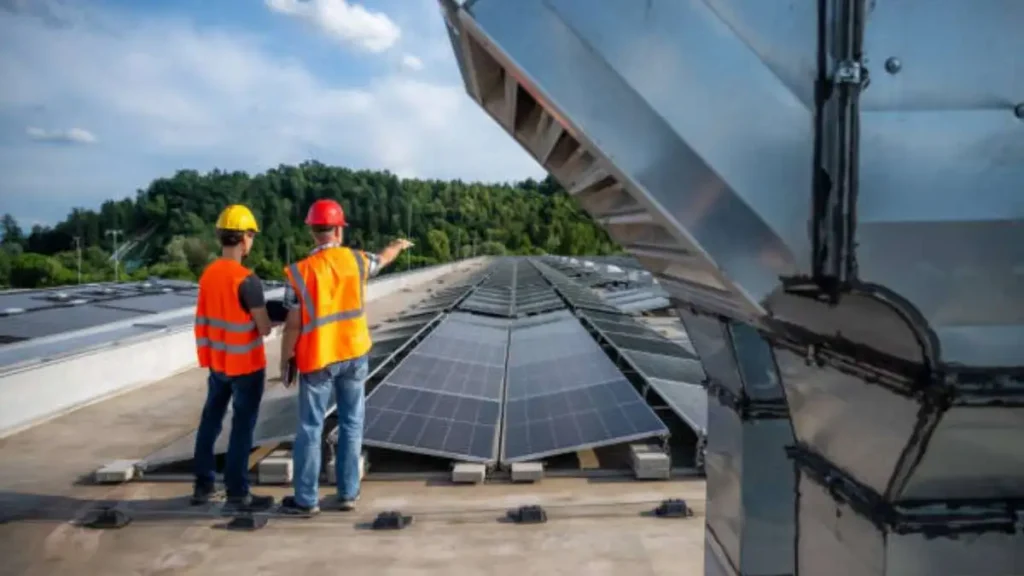
Planning for Additional Solar Panels
Once you have assessed your current system and determined that you have the capacity for more panels, it’s time to plan the installation.
Choosing the Right Panels
Selecting the right solar panels is crucial for energy optimization. Look for panels that offer high efficiency and durability. Monocrystalline panels, for example, are known for their high efficiency and long lifespan. Additionally, consider the wattage of the panels; higher-wattage panels will generate more power in a smaller space.
Calculating the Number of Panels Needed
Based on your energy consumption evaluation, calculate the number of additional panels you need to install. This calculation should take into account the wattage of the new panels and the amount of energy you need to generate to optimize your energy use.
Also, consider energy efficiency upgrade potential. If you plan to make additional energy efficiency upgrades in the future, you may need fewer solar panels.
Planning the Layout
Plan the layout of the new panels carefully. Ensure that the panels are positioned to receive maximum sunlight throughout the day. Avoid placing them in shaded areas, as this can significantly reduce their efficiency. Use a solar pathfinder or similar tool to map out the best locations for your panels.
Installation Process
With your plan in place, you can proceed to the installation process. This involves several steps, including obtaining permits, preparing your site, and connecting the new panels to your existing system.
Obtaining Permits and Approvals
Before you begin the installation, check with your local authorities to determine what permits and approvals are required. Regulations vary by location, and it’s essential to ensure that your installation complies with all local building codes and zoning laws.
Preparing Your Site
Prepare your site for installation by ensuring that your roof or ground area is ready to accommodate the new panels. This may involve cleaning the area, making any necessary repairs, and installing mounting brackets.
Installing the Panels
Follow the manufacturer’s instructions to install the new panels. This typically involves attaching the panels to the mounting brackets, connecting the wiring, and securing the panels in place. Ensure that all connections are properly insulated and protected from the elements.
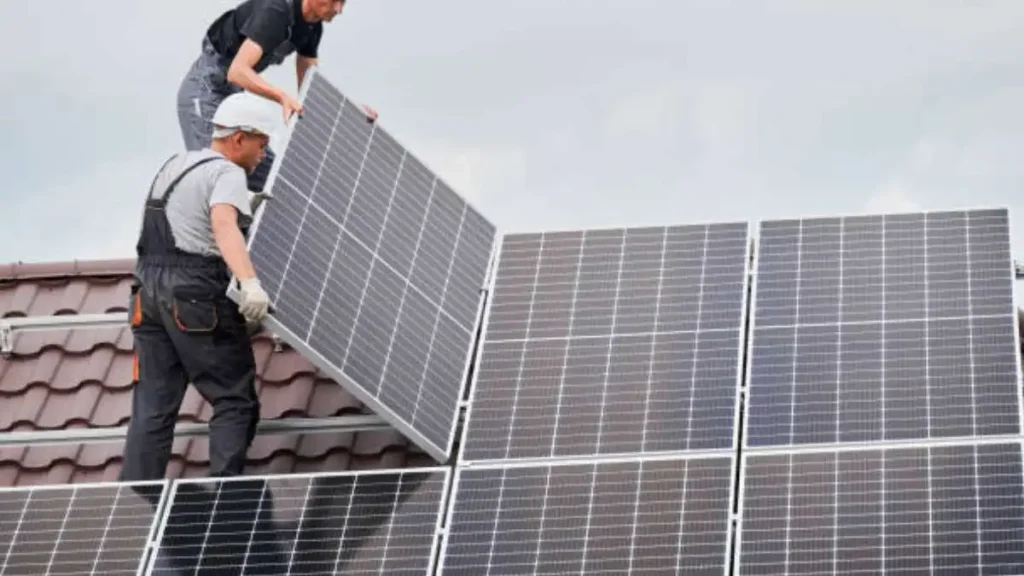
Connecting to Your Existing System
Once the panels are installed, they need to be connected to your existing solar system. This usually involves connecting the new panels to your inverter and updating your system’s configuration to handle the increased load. It is best to have a pro electrician or solar installer do this step. They ensure safety and follow codes.
Monitoring and Maintenance
After installation, it’s essential to monitor your new solar panels to ensure they are operating correctly and efficiently.
Monitoring Performance
Use a solar monitoring system to track the performance of your new panels. This system will provide real-time data on the amount of energy being generated and can alert you to any issues that may arise.
Regular Maintenance
Regular maintenance is crucial for energy optimization. Keep your panels clean and free from debris, and inspect them periodically for any signs of damage or wear. Also, have a professional inspect it every year. This will ensure that it runs well.
Benefits of Installing More Solar Panels
There are numerous benefits to enhancing your existing solar setup with more panels.
Increased Energy Production
By adding more panels, you can greatly boost the renewable energy you make. This can reduce your reliance on grid electricity and lower your energy bills.
Improved Energy Efficiency
More panels mean more energy, which can be used to power more of your home or business. This can lead to improved energy efficiency, as you can meet more of your energy needs with clean, renewable energy.
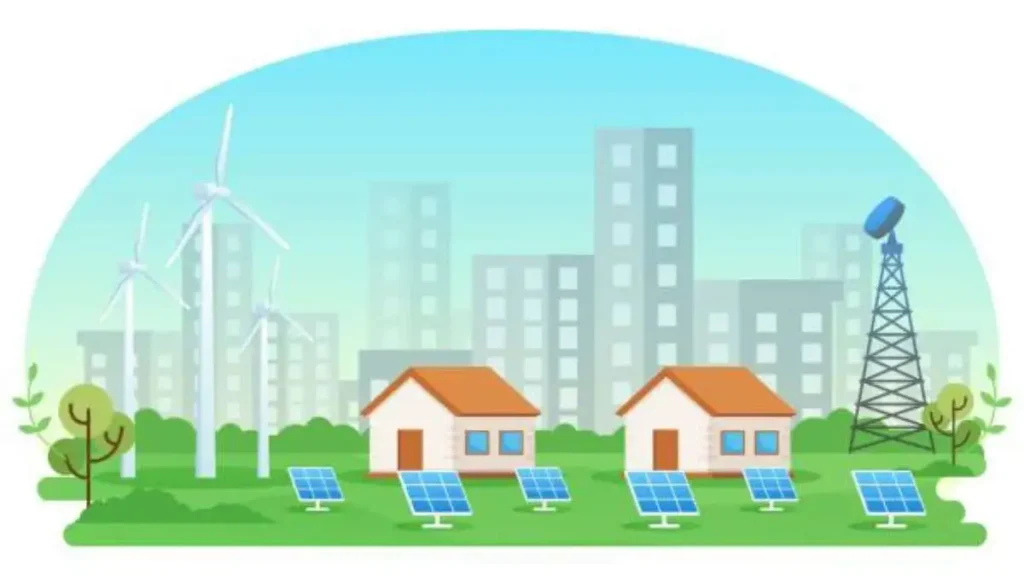
Enhancing Your Existing Solar Setup
Enhancing your existing solar setup with more panels is a smart move for anyone looking to achieve energy optimization. You may want to save money on energy bills. Or, to reduce your impact on the environment. Or, simply to generate more power. Adding solar panels can help you reach your goals.
Achieving Optimal Energy Efficiency
In a nutshell, boosting energy optimization by adding more solar panels is a smart move for both homeowners and businesses. Assess your current system, plan the installation, and keep up with panel maintenance to get the most out of your renewable energy setup. Adding more panels to your solar power system is a solid step toward a greener, more efficient tomorrow.
If you found this article helpful, why not check out some of the other posts we’ve shared on our site?
-

 GENERAL2 months ago
GENERAL2 months agoUncovering the World of кинокрадко: The Dark Side of Film Piracy
-

 GENERAL1 month ago
GENERAL1 month agoUnveiling the Art of преводсч: How Translators Bridge Language Barriers
-

 YOGA1 year ago
YOGA1 year ago4 Person Yoga Poses for Beginners
-

 GENERAL3 weeks ago
GENERAL3 weeks agoChristofle – For Those Who Dream of Family Heirloom Silver

